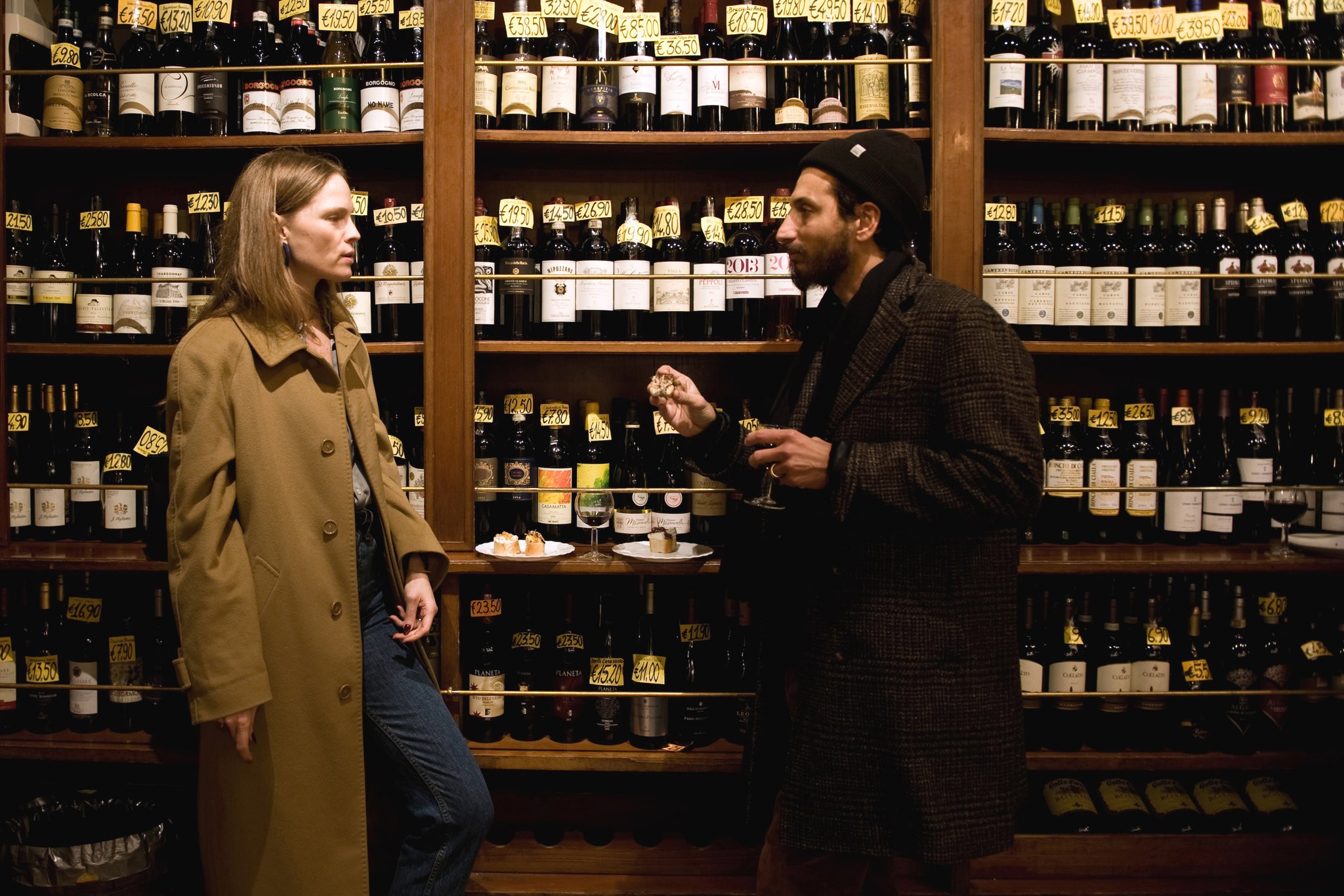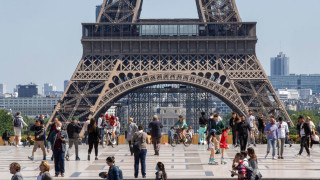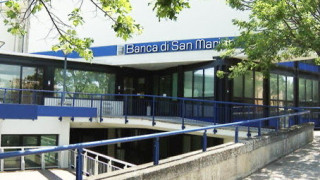
When they need a nibble, local people head to their most loved bacaro for cicchetti, the Italian form of tapas. Here are seven of the best places to discover them.
Every year, 20 million sightseers visit Venice. By far most will pay a lot for detached sustenance eaten for the most part in the organization of different vacationers. In any case, there's single direction to eat incredible Venetian sustenance that is exciting, filling and genuine. You'll see it at a spot where you're practically sure to rub and curve elbows with local people. Visit a bacaro.
Like Spain's tapas bars, the bacaro serves limitlessly shifted, vividly beautiful little plates at costs even a spending voyager can bear. What makes the Venetian variant interesting is that the menu changes occasionally (you're in Italy all things considered), yet step by step and step by step.
Venetians call these little plates cicchetti (articulated "chi-KET-tee") — said to get from the Latin "ciccus," signifying "pretty much nothing" or "nothing." The term grasps an expansive scope of dishes: polpette (browned meatballs), crostini (little open-confronted sandwiches), panini (little sandwiches on hard rolls), tramezzini (triangular white bread sandwiches) — and a glittering exhibit of cured, prepared, stuffed or sauced seafoods and vegetables.
You find cicchetti at a bacaro (wine bar), yet additionally at a botegòn, bar, cicchetteria, enoteca and osteria — confounded yet? Also, likely at your neighborhood bar. Contingent upon whom you ask, bacaro originates from the Venetian word for "wine" or "a great bar," or even from the old Roman divine force of wine, Bacchus.
Venetians have cicchetti for breakfast, lunch, supper and a midnight nibble — for the most part with their fingers. It's look-and-point sustenance: no exceptional dominance of Italian required. Also, you don't have to hang tight to be situated to appreciate it. (That is not by any means an alternative at some bacari.) Cicchetti are shoddy, costing by and large two or three euros — or dollars, so far as that is concerned — each (more for progressively generous fish or meat cicchetti). Six to eight make a supper, and the nearby wines served by the glass are reasonable, as well. There are few different ways progressively tasty or enjoyable to become acquainted with La Serenissima than by setting out on a bar creep. Here are a portion of my top choices.
Cantine del Vino già Schiavi, in the diletantish Dorsoduro District, serves 25 wines by the glass, for the most part from the Veneto.
Cantine del Vini già Schiavi
Let Jiro dream of sushi. Alessandra De Respinis dreams of cicchetti. The septuagenarian proprietor of this hobbit-estimate bacaro in the refined Dorsoduro District turns out these little open-confronted sandwiches by the hundreds. Furthermore, she always concocts new ones, similar to a cicchetto di castagna that plays the hearty sweetness of chestnut purée against the rich funk of robiola cheddar. Or then again her gamberi in saór — a shrimp riff on great Venetian sweet and harsh sardines heaped on a hard cut of roll.
"My clients would revolt on the off chance that I quit serving the tartare di tonno," said Ms. De Respinis of her escapade and schnaps bound cleaved fish cleaned with unsweetened cocoa powder. That astonishing mix won her a prize at a culinary challenge in Mexico City. In any case, Ms. De Respinis is no globe-running culinary specialist: day in, day out, you'll locate her behind the bar, white hair cleared back, striped cook's garment tied around her midsection, with a gold fork stuck to her pullover — a blessing from a client in praise to her favored cooking utensil. On a given day, Già Schiavi serves 25 wines — for the most part from the Veneto — by the glass. I'm inclined toward the minerally white Orto di Venezia St. Venissa, developed on the adjacent island of Mazzorbo. Simply don't hope to appreciate it taking a seat. As Ms. De Respinis advised about a supper at her saloon: "Si devour, si bebe et si paga a piedi." ("You eat, drink and pay holding up.")
Mateo Pinto grinds a crisp horseradish root so hard, you can hear it grate as the red hot shreds fall on bread cuts finished with pink cuts of ham and caramelized onions. His dad, Francesco Pinto, pours an ombra ("shadow," actually — glass of wine in nearby speech) for a Rialto fish dealer speaking Veneziano (a vernacular very unmistakable from Italian) with a lady shaking a kid in a buggy. In the event that the Piazza San Marco is Europe's illustration room (to cite Napoleon), All'Arco is its neighborhood bar. Arranged in a labyrinth of back streets behind the Rialto fish advertise, this has been a bacaro for over a century, clarifies All'Arco organizer Francesco Pinto, who assumed control over the one-room bar in 1996. He began with twelve cicchetti — exemplary porchetta sandwiches, for instance, and crostini spread with gorgonzola and anchovies.
Today, you'll discover more than 30 of every a regularly changing repertory of hundreds. "We make our crostini continuously, not constantly," clarified Mateo Pinto. "The freshness must be obvious in each chomp." You don't get a lot fresher than the season's first canocchie, extraordinarily sweet mantis shrimp straight from the Lagoon, served on minor arugula leaves and tomatoes. In the winter, you'll find heavier charge, for example, veal stracotto (stew) — heaped on a dry move, similar to some Venetian form of pulled pork. All'Arco takes its name from the antiquated stone curve confronting the bar — said to symbolize the wedding association of two neighboring family units hundreds of years back. The bacaro fills rapidly, so clients spill out to little tables covering the walkway. The climate is happy and jaunty — the ideal exemplification of a Venetian establishment planned not exclusively to slake your thirst and soothe your craving, yet in addition to assemble your feeling of network. "We've lost such a large amount of our city," Mr. Pinto said. "This is one of the spots where Venetians come to feel Venetian."
Get the Travel Dispatch Newsletter
Each Saturday, get travel tips, goal inclusion, photographs from everywhere throughout the world and the sky is the limit from there.
All'Arco, San Polo 436, Calle de l'Ochialer; 011-39-041-520-5666.
Osteria al Squero
Squero alludes to a boatyard where gondolas are manufactured or fixed. This suitably named osteria faces the Squero San Trovaso — one of the last such working boatyards in Venice. Established by two siblings (Alessandro Vio runs the front of the house; Cristiano makes the cicchetti), Al Squero draws an enlivened horde of workmanship understudies from the close-by Academia Museum and travelers from around the planet. Wine bottles line the dividers and cicchetti shimmer in the feature.
Obviously, they serve the universal baccalà mantecata (salt cod stewed in milk and whipped with oil to a frigid mousse) and sarde in saór (sweet and sharp sardines). Be that as it may, you'll additionally discover such distinctly untraditional cicchetti as tissue-slender cuts of lardo perfumed with nectar, rosemary and pink peppercorns, and crostini piled with simmered pumpkin, porcini and ricotta. There are meatless polpette for vegans, and in a gesture to the biological worries of youthful Venetians, the cicchetti please biodegradable plates. The Vio siblings spend significant time in wines from northern Italy, including an especially invigorating J. Hoffstatter Gewürztraminer from the Alto Adige.
They've likewise upscaled Venice's crucial mixed drink, the spritz, here settled on with your decision of electric orange Aperol, ruby red Campari, or bracingly harsh artichoke-based Cynar. On the off chance that you truly need to appear aware of everything, request a mezzo e mezzo — arranged with half Aperol and half Campari. All come trimmed with a salty olive on a stick rather than the customary orange cut.
Osteria al Squero, Dorsoduro 943/944, Fondamenta Nani;
To set out on a cicchetti slither in Venice without attempting Do Spade's polpetta di spianata calabra would resemble visiting San Marco and disregarding the basilica. It's a meatball, be that as it may, gracious, what a meatball: blazing Calabrian wiener pounded with smoked provoletta cheddar and potatoes, and gently breaded and seared. "We needed to open a cicchetteria that serves more than open-confronted sandwiches," clarified Francesco Munarini, a previous bank official who opened Do Spade 10 years back with his better half, Pilar, and sister, Giovanna. (The customer facing facade has housed an osteria since 1488.) Inspired by the Rialto fish showcase close-by, the Munarini family chose to represent considerable authority in fish prepared with the huge seasoned flavors that made the fortunes of Venetian dealers for quite a long time.
One after another, I brought down calamari ripieni (delicate squid loaded down with olives and bread morsels), fiori de zucca farciti con baccalà mantecato (fricasseed squash blooms loaded up with creamed codfish), moscardini in umido (stewed child octopus), la buzara (scampi stewed in ginger-and pepper-aroused tomato sauce) and what likely could be the best sarde in saór in Venice. The neighborhood inclining wine list is sufficiently ecumenical to incorporate jugs from Istria, presently part of Croatia, however which had a place with Italy before World War II. Conspicuous by the crossed sabers in the window and overflow jams in the rear way, Do Spade ("Two Swords") offers seating in a warren of just enlivened blue rooms, however most clients like to eat remaining by the open kitchen or in the road.
Cantino Do Spade, San Polo 859, Calle do Spade; cantinadospade.com










Leave a comment